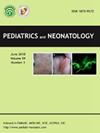阿尔波特综合征:扩大诊断和治疗范围。
IF 2.1
4区 医学
Q2 PEDIATRICS
引用次数: 0
摘要
阿尔波特综合征(AS)是导致终末期肾病(ESKD)的全球第二大常见单基因病因,其病因是 COL4A3、COL4A4 或 COL4A5 的致病变体导致 4 型胶原蛋白缺陷。4型胶原蛋白也存在于眼睛和耳朵中,因此强直性脊柱炎患者会出现眼部缺陷和听力损失。在过去的二十年里,由于基因检测的普及和基因型与表型相关性的研究,人们对强直性脊柱炎的认识不断加深。以前被诊断为特发性类固醇抵抗性肾病综合征或病因不明的 ESKD 的患者,如果发现 COL4A3-5 变体,现在可能会被诊断为 AS。如果肾小球基底膜有典型的病理变化或出现蛋白尿和肾病进展,一些杂合子COL4A3-5变异体的携带者现在可被归类为女性X连锁强直性肾病或常染色体显性强直性肾病。最后,有研究建议,对于选定的强直性脊柱炎患者,应尽早开始肾素-血管紧张素-醛固酮系统抑制剂的治疗,以发挥其对肾功能恶化的长期保护作用。本综述旨在向普通儿科医生和儿科肾病专家介绍这些重要概念。本文章由计算机程序翻译,如有差异,请以英文原文为准。
Alport syndrome: Expanding diagnosis and treatment
Alport syndrome (AS) is the second common monogenic cause of end-stage kidney disease (ESKD) worldwide and is caused by defective type 4 collagen due to pathogenic variants of COL4A3, COL4A4, or COL4A5. Type 4 collagen also exists in the eyes and ears, and thus ocular defects and hearing loss occur in AS. The understanding of AS has expanded over the past two decades due to greater availability of genetic testing and research on genotype-phenotype correlation. Patients previously diagnosed with idiopathic steroid resistant nephrotic syndrome or ESKD of unknown etiology may now be diagnosed as AS if pathogenic COL4A3-5 variants are identified. Some carriers of heterozygous COL4A3-5 variants may now be classified into females with X-linked AS or autosomal dominant AS, if there are typical pathologic changes in the glomerular basement membrane or if there is proteinuria and progression of kidney disease. Lastly, it has been recommended that renin-angiotensin-aldosterone system inhibition be started as soon as possible for selected AS patients for its long-term protective effect against kidney function deterioration. The purpose of this review is to introduce these important concepts to general pediatricians and pediatric nephrologists.
求助全文
通过发布文献求助,成功后即可免费获取论文全文。
去求助
来源期刊

Pediatrics and Neonatology
PEDIATRICS-
CiteScore
3.10
自引率
0.00%
发文量
170
审稿时长
48 days
期刊介绍:
Pediatrics and Neonatology is the official peer-reviewed publication of the Taiwan Pediatric Association and The Society of Neonatology ROC, and is indexed in EMBASE and SCOPUS. Articles on clinical and laboratory research in pediatrics and related fields are eligible for consideration.
 求助内容:
求助内容: 应助结果提醒方式:
应助结果提醒方式:


